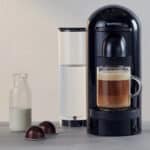
Is it worth to open an organic grocer? Think about it!
Organic food, in a perfect world, is produce that is farmed using natural methods. Rather than use pesticides, it’s farmed next to cooperative crops that work to deter pests naturally. Natural fertilizer, changing over crops, and ancestral farming methods would be used to provide food that is rich in nutrients and dense in taste. Unfortunately, the classification of organic is incredibly vague, which makes it difficult for shoppers to understand what they’re truly getting and why.
Big corporations use organic as a form of greenwashing often, but that doesn’t mean that organic food simply doesn’t exist. It simply means working closely with suppliers, understanding the various classifications and labels, and then providing not only enriched foods, but the story behind them.
It can be costly for a farm to switch to organic production and gain the “Certified Organic” label. Small farms may not have that label but use ancient farming techniques to avoid artificial growing practices. Some may be on the other side and use innovative greenhouse and vertical growing methods to produce food locally.
Regardless of how a supplier creates the organic food you want to see, it’s important to convey that information to your customers. Using the hard work of your suppliers as a marketing method, of course, is just one of the ways that you can make your organic grocer idea a success:
Build Your Own Organic Grocer
Bring the Farm to the Table
As stated, actively advertising the farms and the people who produce the food (when possible) is a great way to advertise the produce in question. Even small blurbs under the produce, or a section on your wall that highlights the farmers you work with, can go a long way toward helping your customers make an informed choice and understand just what it is that makes the produce you sell organic.
Offer Organic Dry Goods in Bulk
When it comes to dry goods for the organic grocer, offering Certified Organic products is a decent place to start, but you may find that having a bulk food section is a bigger draw for a larger portion of customers. Since dry goods keep for longer, you can easily sell them by weight. This means you can buy organic products and offer a zero-waste bulk food model. This allows you to buy a 50lbs box of organic bulk garlic powder, for example, and sell it at what feels like a great price for your customers, while also making a tidy profit for yourself. As a bonus, customers can buy the necessary amount without adding unnecessary waste. Suppose they’re making a large batch of garlic knots for a bake sale, for example. In that case, they can easily get the exact weight of ingredients they need, making you the preferred choice over buying multiple individual units offered at big chain stores.
When it comes to bulk, don’t stop at dry goods even it’s an organic grocer. You can also sell shampoo, conditioner, and cleaning supplies in bulk, thanks to an increase in eco-friendly brands. Being something of a one-stop shop for essentials that are better for the earth is a great way to become your customers’ go-to and entice them away from the big box stores. Naturally, you won’t have the same amount of space, so if you can offer products that are needed, but also not available in big chains, your brand can become a big hit.
Partner with Local Artists and Makers
From local bakeries to even local artists, working with community makers is a great way to offer more value for your customers, so long as you can fit the space. Having a small section that sells cards and little gifts, for example, is a great way to add to that final bill. If a holiday is coming up, or if someone’s birthday is approaching, then your shoppers may just add that hand-painted card or that reusable mug to their order.
There’s a several ways to ask collaboration with local artists who their products are fit on organic grocer.
The point is to increase each shop by adding value to your range. If your customers can buy the items you offer for less somewhere else, then they likely will. If, on the other hand, you offer things they’ve never seen before or since, they’ll be happier to pay that price to you.
Add Café Treats
Another easy way to both get more customers on organic grocer and increase the final price is to offer coffee, tea, hot chocolate, and a few baked treats. Your café set-up doesn’t have to be large at all, but it should get the job done. Offering this brings in coffee fans, and guess what? While they wait, they’ll often peruse your store and might very well come back with a few items since they’re there.
If you do offer this, see if you can at least set up a table or two outside. This is a great spot for people to drink said coffee, or to wait while their companion is shopping inside. If you own a relatively large organic grocer store, you may even want to add this inside next to the window, so passersby can see your place is popular.
Amp Up the Décor
Small, independent shops can find it hard to entice new customers, especially if they feel like they know what you offer and are happy to buy the produce for less at a big chain or even frozen. Add in the fact that a lot of food shopping is now done online, and it’s only become more difficult for small businesses to get a piece of the pie. That’s why décor is so important. Making your organic grocer look great is how it can get photographed and put online. It’s also how you’ll catch the eye of passersby and convince customers to spend longer in your store.
Offer Modern Services
Offer modern services, even if they’re relatively simple. For example, you can have an organic grocer online “store” where customers can put together their orders and even pay in advance. You’ll then collect this order and have it ready for pickup when they come. As you grow, you can even offer bike delivery for those in your immediate organic grocer’s area.
Was this helpful?
Hi there! I’m a food enthusiast and journalist, and I have a real passion for food that goes beyond the kitchen. I love my dream job and I’m lucky enough to be able to share my knowledge with readers of several large media outlets. My specialty is writing engaging food-related content, and I take pride in being able to connect with my audience. I’m known for my creativity in the kitchen, and I’m confident that I can be the perfect guide for anyone looking to take their culinary journey to the next level.








